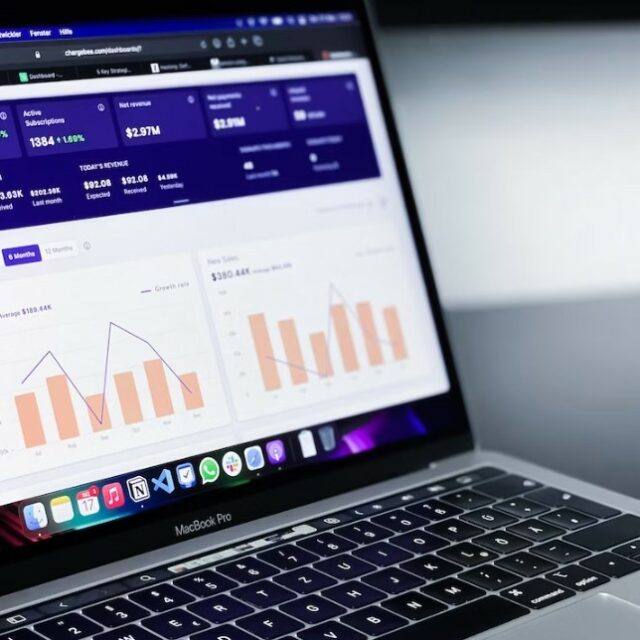Microsurveys have revolutionized data collection, offering a quick and efficient way to gain valuable insights. As an expert in this field, I’ll provide you with a deep understanding of microsurveys, shedding light on their limitations and effective navigation. Microsurveys are concise questionnaires that gather specific information or feedback. Unlike time-consuming traditional surveys, they consist of only a few questions and can be conducted through email, SMS, or mobile apps. This streamlined approach ensures prompt responses without overwhelming participants.
Purpose: Microsurveys obtain targeted data on particular topics or issues. They capture succinct responses for real-time feedback on customer satisfaction levels, product usability improvements, market research insights, and more. The power lies in swiftly addressing concerns and making informed decisions based on up-to-date information.
Click here to learn all about microsurveys.
However, it’s important to acknowledge the limitations, such as limited depth, sampling bias, question design challenges, and response rate concerns. By understanding boundaries and making informed decisions about when to use them appropriately, organizations can harness their power to enhance decision-making processes and drive positive change. Now let’s explore practical tips for maximizing their effectiveness across industries and applications.
Limitations of Microsurveys: An Expert Perspective
As an expert in the field, I want to provide you with a comprehensive understanding of the limitations of microsurveys. While these surveys are incredibly useful in many situations, it’s important to be aware of their constraints so that you can make informed decisions when using them for your research or data collection needs.
- Limited Depth of Information: Microsurveys excel at gathering quick insights, but they have their limits when it comes to capturing detailed and nuanced information. These surveys are designed to be brief and simple, which means they may not delve into complex opinions or emotions. If you require in-depth responses or need to explore intricate topics, traditional surveys may be more appropriate.
- Potential for Response Bias due to Simplicity: The brevity and conciseness of microsurveys make them easy for respondents to complete quickly. However, this simplicity also introduces the potential for response bias. Certain aspects may be oversimplified or overlooked altogether, leading participants not fully express their thoughts or feelings on a subject.
- Difficulty in Capturing Complex Opinions or Emotions: Microsurveys often struggle with accurately capturing complex opinions and emotions due to their limited question formats and response options. Closed-ended questions with predefined answer choices are commonly used in these surveys, but they may not adequately capture the richness and complexity of human experiences.
It’s important to note that microsurveys have their place and offer unique advantages. However, they should be used strategically alongside other research methods when necessary. Understanding the limitations of microsurveys will help you make informed decisions about when and how to use them effectively. Continue reading our next section, where we explore the comparison between microsurveys and traditional surveys, helping you choose the right survey method for your specific needs.
Overcoming Microsurvey Limitations: Practical Tips
Despite these limitations, there are practical strategies you can employ to overcome them and maximize the value of your microsurvey efforts.
- Combine Microsurveys With Other Data Collection Methods: To gain a holistic understanding of your target audience’s preferences and behaviors, consider combining microsurveys with qualitative research methods such as interviews or focus groups. This combination allows you to gather both quantitative and qualitative insights for a well-rounded analysis.
- Carefully Design Questions to Minimize Bias: When designing your microsurvey questions, pay close attention to wording and structure in order to minimize potential biases introduced by the simplicity of the format. Use neutral language, avoid leading questions, and consider including open-ended options to encourage more detailed responses.
- Utilize Follow-up Questions for Deeper Insights: While microsurveys may not capture complex opinions or emotions initially, you can use follow-up questions strategically to delve deeper into specific areas of interest. By asking additional probing questions based on respondents’ initial answers, you can gather more nuanced insights without overwhelming them with a lengthy survey.
By implementing these tips and considering the limitations of microsurveys, you can make informed decisions about when and how to effectively utilize this data collection method.
Choosing the Right Survey Method: Microsurveys vs. Traditional Surveys
When it comes to gathering valuable insights, selecting the right survey method is paramount. In this section, we will delve into the key factors you should consider when deciding between microsurveys and traditional surveys.
- Key Factors to Consider:
- Time Constraints: If time is of the essence, microsurveys are your go-to option. These concise surveys can be completed in just a few minutes, whereas traditional surveys often demand more time investment.
- Response Rates: Microsurveys boast higher response rates due to their brevity. Participants are more likely to engage if they know it won’t consume much of their precious time.
- Cost-Effectiveness: When it comes to cost-effectiveness, microsurveys take the lead as they require fewer resources compared to traditional surveys that may involve printing and mailing questionnaires.
- Target Audience: It’s crucial to consider the demographics and preferences of your target audience. Tech-savvy younger generations might prefer completing microsurveys on their smartphones.
- Situations Where Microsurveys Excel:
- Real-Time Feedback: For immediate feedback on specific events or experiences like customer satisfaction after a meal at a restaurant or user experience with a new software update, microsurveys enable swift data collection.
- Daily Check-ins: If you need ongoing monitoring or performance tracking over time, microsurveys provide regular updates without overwhelming participants with lengthy questionnaires.
- Cases Where Traditional Surveys Shine:
- Complex Opinions or Emotions: When capturing nuanced opinions or deep emotions from respondents is vital for your research objectives, traditional surveys offer greater flexibility in terms of question types and response options.
- Feasibility Limitations: Certain topics may necessitate longer survey lengths due to their complexity. Traditional surveys allow for detailed descriptions and open-ended questions that better capture necessary information in such cases.
It’s important to note that microsurveys and traditional surveys are not mutually exclusive. In fact, combining both methods can maximize the benefits. Start with a microsurvey to gather initial insights and follow up with a traditional survey for more in-depth responses from participants who have already shown interest and engagement.
In conclusion, choosing between microsurveys and traditional surveys depends on various factors such as time constraints, response rates, cost-effectiveness, target audience preferences, research objectives, and feasibility limitations. Understanding these considerations will empower you to make an informed decision about which survey method best suits your specific needs.
Maximizing the Value of Microsurveys: Expert Recommendations
Maximizing the potential of microsurveys is crucial. These surveys can uncover valuable insights when used effectively. Here are some expert recommendations to help you get the most out of your microsurvey efforts:
- Craft concise and focused surveys: Ask a few targeted questions to boost response rates and prevent respondent fatigue.
- Use clear language: Avoid confusing jargon or technical terms that may bewilder participants.
- Implement skip logic: Tailor subsequent questions based on previous responses to enhance participant engagement.
- Blend quantitative with qualitative data: Combine microsurveys with interviews or focus groups for deeper insights.
- Track trends over time: Conduct regular microsurveys to monitor changes in customer preferences or opinions.
- Choose a reliable survey platform: Look for user-friendly platforms with customizable templates, real-time reporting, and integration options.
- Explore automation capabilities: Find platforms that allow you to schedule surveys, send reminders effortlessly, and analyze results efficiently.
By following these expert recommendations, your microsurvey initiatives will yield meaningful outcomes that drive informed decision-making within your organization. Remember, while acknowledging their limitations, strategically using microsurveys alongside other research methods unlocks their full potential. Seize this opportunity!




